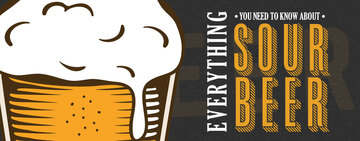What Is Mouthfeel?
Last updated on Dec 11, 2017Jessica WieserThe word "mouthfeel" refers to the sensations that are experienced inside the mouth while eating or drinking. These can include textures that touch the tongue, roof of the mouth, teeth, throat, or it even can refer to an aftertaste. The term is believed to have originated in wine tastings, where tasters will articulate their experience as a means of sharing thoughts about a particular wine. For example, the way a particular wine coats the inside of the mouth is an indication of the viscosity of the product and is an important feature when considering the overall quality of the wine. Mouthfeel is also commonly discussed in coffee cuppings as well as tastings of other craft beverages such as whiskey or some types of beer.
How Does Mouthfeel Relate to Foodservice?

Nowadays, mouthfeel terminology can refer to any number of foods and is often discussed among food critics. It can even be argued that mouthfeel has more impact than flavor in determining whether a person prefers one food over another. The silky texture of tofu or the crunch of crispy duck skin contributes to the overall experience of eating the dish.
For example, there are a wide variety of foods that some people shy away from, strictly due to their texture. Some people find okra too slimy, oysters too snotty… biting into a mushroom can evoke unpleasant mental images, and even the most delicious cherry tomatoes can turn people off when they pop under the pressure of teeth. Without a doubt, mouthfeel has a huge impact on the way we experience food.
It’s no accident that food textures can raise some red flags for us. Our natural response to mouthfeel while eating is an instinctual trigger that’s intended to serve as an indication of whether or not something is safe to eat. As foods lose freshness, their texture changes and (in most cases) becomes unappealing. If we experience an unexpected texture while eating, it can cause us to lose our appetite for fear of something being spoiled. In most cases, however, the textural experience can be analyzed objectively for the sake of critique.
Manipulating Mouthfeel
With today’s modern technologies, there are endless possibilities when it comes to food. Many molecular gastronomists love to play around with texture to give their guests an entirely new experience. From flavored vapors to foam, there are so many techniques that can be used to impact the mouthfeel of a dish. But you don’t need to venture to a Michelin Star restaurant to find examples of manipulated mouthfeel. If you’ve ever eaten “astronaut ice cream,” you’ve experienced a textural play on a familiar food.
Dark Dining
You may have heard about a recent trend called “dark dining” where the entire dining room is devoid of light and servers wear night vision goggles. Some dark dining restaurants will hire blind or visually impaired servers who can move about the space with little difficulty. Another rendition of the dark dining concept entails diners being blindfolded. The overall goal of this setup is that by removing the sense of sight, diners can be more fully immersed in their other senses to experience the act of eating in a new way. While the vast majority of restaurants put a lot of effort into their plating presentation, dark dining establishments focus more on the flavor, aroma, and texture of their foods to encourage their customers to focus on aspects of eating that they ordinarily might not notice… namely, mouthfeel.
Mouthfeel Descriptor Words
As with most artistic critiques, there’s a vocabulary that aids in the sharing of thoughts and opinions. These descriptors can be categorized into two basic segments: drinks (for wine, coffee, tea, liquor, beer, and cocktails) and foods. Some common mouthfeel descriptor words include:
- Acidity - The quality of the acid, whether balanced or astringent
- Examples: Metallic, citrusy, bright
- Density - The compactness of the texture
- Examples: Close, airy
- Dryness - The degree to which moisture is removed from the mouth
- Examples: Arid, scorched
- Graininess - The quality of small particles
- Examples: Particulate, powdery, dusty, grainy, chalky
- Gumminess - The amount of energy needed to break up the food
- Examples: Chewy, tough
- Hardness - The amount of force needed to take a bite
- Examples: Crunchy, soft
- Harshness - The power over the palate
- Examples: Aggressive, delicate
- Heaviness - The perceived weight of the food in the mouth
- Examples: Full, weighty
- Irritation - The amount of discomfort
- Examples: Prickly, stinging
- Mouth Coating - The type and degree of the layer left in the mouth after eating
- Examples: Oily, buttery
- Roughness - The degree of coarseness
- Examples: Abrasive, textured
- Slipperiness - The degree of sliding sensation
- Examples: Slimy, stringy
- Smoothness - The silkiness or fluidity
- Examples: Satiny, velvety
- Uniformity - The evenness of the texture
- Examples: Even, uneven
- Viscosity - The amount of force needed to move liquid
- Examples: Full-bodied, light-bodied
- Wetness - The amount of moisture
- Examples: Moist, sloppy
How to Describe Mouthfeel

To give an example of how one might use descriptor words to describe mouthfeel, let’s explore one common fruit that creates a unique mouthfeel. Peaches provide a variety of sensations: breaking through the skin to reach the flesh of the fruit, finding juiciness there as well as the fuzzy texture from the outside of the peach. We chew the fruit and then finally swallow it. And while most of us may not pay much attention to any specific sensations while we eat, these are all components of mouthfeel.
So, using the words from the table above, one could describe the hardness of the outer layer of the peach as soft, the wetness of the peach’s flesh as juicy, and the smoothness of the flesh as slightly stringy with a delicately chewy skin.
No matter if you’re a seasoned chef or new to the scene, you’ve likely encountered foods that stood out to you because of their mouthfeel. Whether you use the common vocabulary or not, mouthfeel is undoubtedly an important part of the overall eating experience and should be taken into account when developing new dishes.



